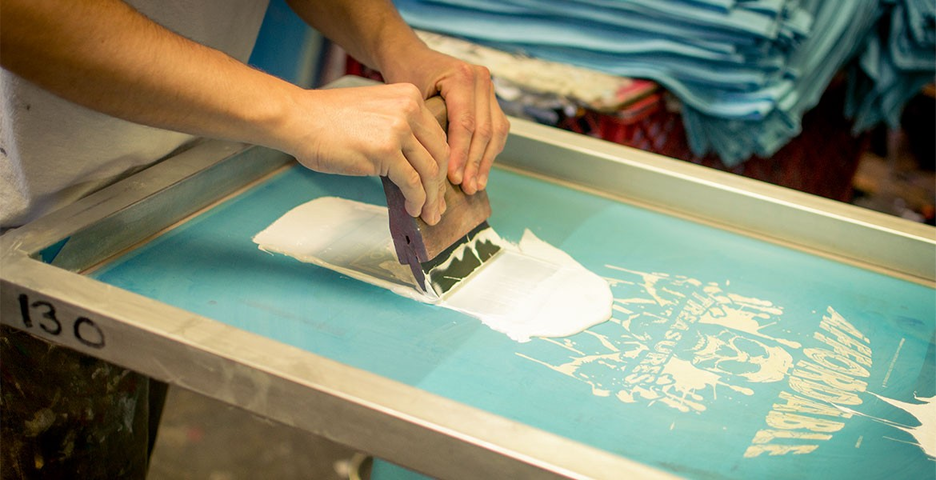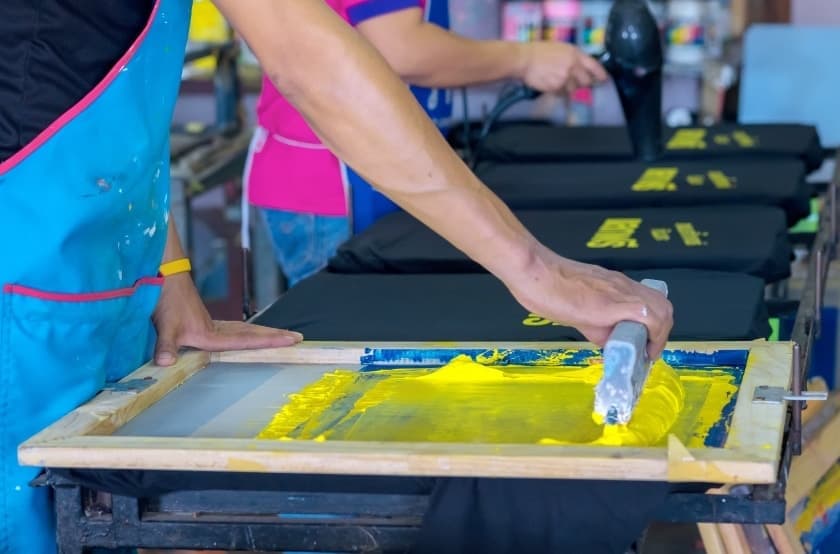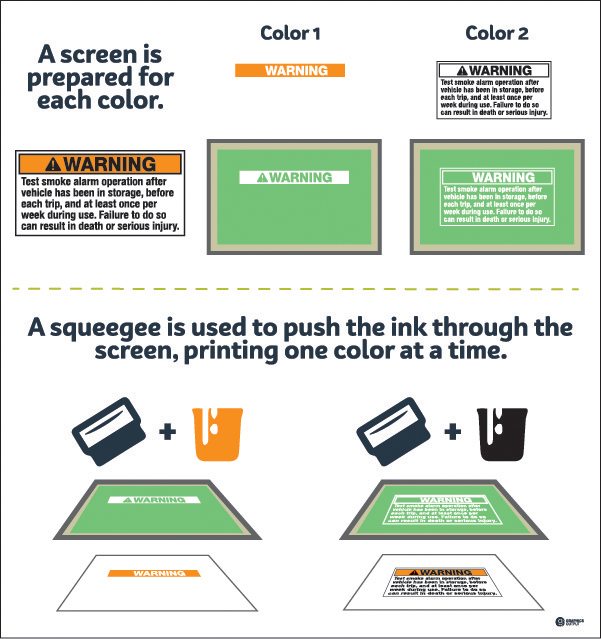About Tx Tees
About Tx Tees
Blog Article
The smart Trick of Tx Tees That Nobody is Discussing
Table of ContentsThe Main Principles Of Tx Tees The Only Guide to Tx TeesThe Buzz on Tx Tees3 Simple Techniques For Tx TeesTx Tees for BeginnersThings about Tx TeesTx Tees Fundamentals Explained
Add up various other expenses, like the number of utilities it takes to run the shop and the price of ink and emulsion per layout. Take the print below.The emulsion needs to just be a few cents because you 'd just require to layer one display for this work. Just how much should you bill per shirt to make a profit? Typically, printers try to make up to 45% revenue on a print task. Right here's a table to aid you determine that: total cost per product percent of preferred revenue as a decimal (example:.25 or.45) revenue made per product per job Now let's talk regarding the earnings of DTF.

With DTF, you can publish a handful of shirts, or simply one. Both screen printing and DTF have their particular niches in the world.
Tx Tees Can Be Fun For Everyone
The very best means to know? Ask around and see what print stores like yours are doing. custom t-shirt design. Attempt both out and see which you like far better
When you're choosing what sort of printing approach to utilize for printing your art work designs on your garments, it is very important that you recognize the distinctions in between these 2 strategies so you can optimize outcomes while reducing expenses. Display printing is one of the most generally made use of strategy for publishing layouts on fabrics.
DTG printing is likewise referred to as area or direct to garment printing since it prints only what is required rather of making a display as screen printers do. https://txtees02.bandcamp.com/album/tx-tees. Screen printing functions by screen filler squeegee screen printing ink display mesh screen, after that transferring the picture to garment using warm and/or pressure
The DTG printer uses unique dye-sublimation inks that are used into a pre-designed picture by a digital printing system. The inks enter into the material, permitting for lively shades and outstanding detail. It's likewise called spot or direct to garment printing due to the fact that it prints just what is needed rather than making a display as screen printers do.
Tx Tees Can Be Fun For Anyone
Initially, it's much quicker - you can publish a fullcolor photo in mins, as opposed to hours for screen printing. Second, there's no established time or expenses included - you can publish any kind of layout you such as, without needing to develop a display initially. Third, there's no waste - because screen printers screen print one design at a time, they have to screen each shade independently.
The paper is really pricey and can just be made use of as soon as. Once it's published on, it has actually to be thrown out. - The first acquisition cost is lower than the in advance financial investment of DTG printers- You can print multi-color layouts one display at once rather than needing to print each color separately like DTG printing.

All About Tx Tees
Instead of utilizing display mesh as display printers do, dye sublimation printers use laser innovation to transfer your images onto garments or paper. A heat process moves the dye from its solid-state directly into the gas stage which subsequently integrates it onto fabric substrates when they are rapidly heated up to high temperature levels under high stress.
Sublimation printing is environmentally friendly. It utilizes much less water than screenprinting, and due to the fact that it does not involve the use of dangerous solvents, it's secure for all sorts of apparel. The color sublimation inks are likewise odor-free when healed, unlike screen printers that use damaging chemicals during the screen printing procedure that leave an undesirable smell.
They additionally conserve cash on pricey tools like direct exposure devices given that dye sublimation printers don't require a UV exposure unit or a flash cure oven that is usually utilized in screen printing (custom cap printing). What is straight to garment printing (DTG Printing)? DTG printing is a digital screenprinting process that prints directly onto material making use of specialized inkjet printers
Tx Tees Can Be Fun For Everyone
DTG printing supplies numerous advantages over standard screenprinting, including the ability to publish photographic top quality photos, better color vibrancy, and the capacity to print designs on darker fabrics. DTG printers function by heating the textile ink until it develops into a gas. The gas then permeates the textile, bonding with the fibers to produce a long-term print.

Display printers merely prepare their screen then begin publishing up until they run out of product or ink.- There is a large range of experienced display printers throughout the globe, which can be handy for newbies. - It's a slower procedure - display printers typically have to wait for the ink to completely dry prior to they can publish the next color- Screen printers require manual work, so there's a greater knowing curve and it takes longer to generate a top quality design- Display printing isn't as precise as DTG printing, so you may obtain some "blood loss" of shades from one component from this source of the image onto an additional otherwise done appropriately.
The Definitive Guide for Tx Tees
Instead of making use of screen mesh as screen printers do, color sublimation printers make use of laser innovation to move your images onto garments or paper. A heat procedure moves the dye from its solid-state directly right into the gas stage which in turn merges it onto textile substrates when they are quickly warmed to heats under high pressure.
Sublimation printing is eco-friendly. It utilizes much less water than screenprinting, and due to the fact that it doesn't include making use of harmful solvents, it's safe for all sorts of garments. The color sublimation inks are also odor-free when healed, unlike display printers that use damaging chemicals throughout the display printing procedure that leave behind an unpleasant odor.
They also save cash on expensive tools like direct exposure units since dye sublimation printers do not require a UV direct exposure unit or a flash cure oven that is usually used in screen printing. What is direct to garment printing (DTG Printing)? DTG printing is an electronic screenprinting procedure that publishes straight onto fabric utilizing specialized inkjet printers.
The Buzz on Tx Tees
DTG printing offers many advantages over standard screenprinting, including the ability to publish photo high quality images, greater shade vibrancy, and the capability to print layouts on darker materials. DTG printers work by heating the fabric ink until it turns right into a gas. The gas then permeates the textile, bonding with the fibers to produce a permanent print.
Report this page